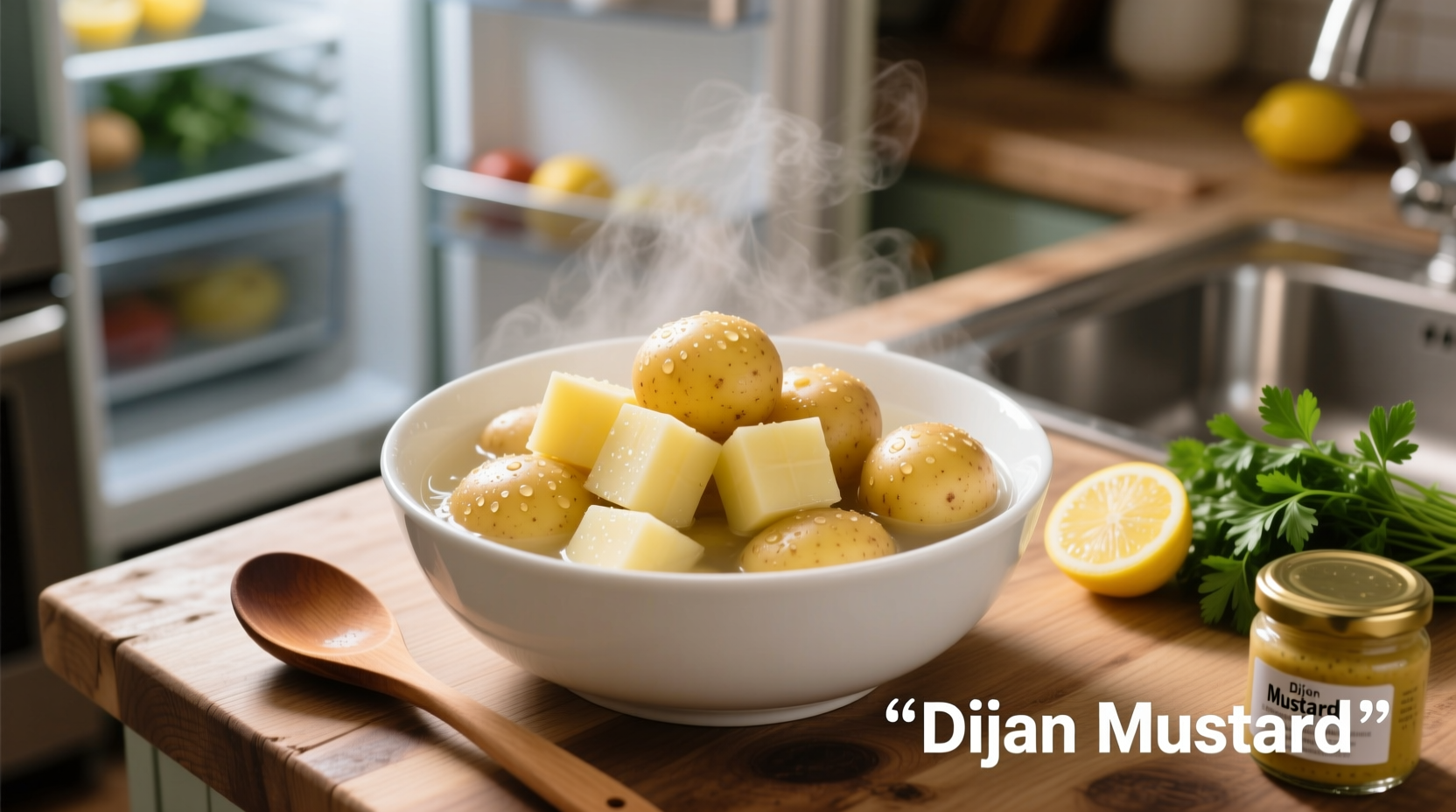Why Proper Potato Boiling Makes or Breaks Your Salad
Getting the boiling process right for potato salad is surprisingly nuanced. Many home cooks end up with either waterlogged, falling-apart potatoes or frustratingly hard centers. The difference between mediocre and exceptional potato salad often comes down to three critical factors: potato variety selection, precise cooking time, and proper cooling technique. When potatoes are boiled incorrectly, they either absorb too much dressing (becoming soggy) or fail to absorb flavors properly (resulting in bland salad).
Choosing the Right Potatoes for Salad
Not all potatoes behave the same when boiled. For potato salad, you need varieties with lower starch content that hold their shape after cooking. Waxy potatoes maintain their structure better than starchy varieties like Russets, which tend to disintegrate.
| Potato Variety | Starch Content | Texture After Boiling | Best For Potato Salad? |
|---|---|---|---|
| Yukon Gold | Moderate | Firm yet creamy | ✓ Excellent choice |
| Red Potatoes | Low | Firm and holds shape | ✓ Best choice |
| Russet | High | Tends to fall apart | ✗ Avoid |
| Fingerling | Low-Moderate | Firm with distinctive shape | ✓ Good choice |
According to USDA agricultural research, waxy potatoes contain 16-18% dry matter compared to starchy varieties at 20-22%, which explains their superior shape retention during boiling (USDA Agricultural Research Service).
Preparation Techniques That Matter
How you prepare potatoes before boiling significantly impacts the final texture:
- Size consistency: Cut potatoes to uniform 3/4-inch cubes for even cooking
- Cold water start: Always begin with cold, salted water (1½ tablespoons per gallon)
- Don't overcrowd: Use a large enough pot so potatoes have room to move
- Never add vinegar to water: This common tip actually makes potatoes more prone to breaking
The Perfect Boiling Process
Follow these precise steps for ideal potato salad potatoes:
- Place cut potatoes in a large pot and cover with cold water by 1 inch
- Add salt (not vinegar) - this seasons from within without damaging cell structure
- Bring to a gentle simmer over medium heat (not a rolling boil)
- Cook 12-15 minutes until fork-tender but still holding shape
- Test doneness by piercing with a knife - should meet slight resistance
The American Culinary Federation recommends removing potatoes from heat when they reach 190-195°F internally, as this provides the ideal balance between cooked-through centers and structural integrity (American Culinary Federation).

Cooling: The Critical Step Most People Skip
How you cool potatoes determines whether they'll be waterlogged or perfectly textured:
- Drain immediately in a colander - don't let potatoes sit in hot water
- Spread in a single layer on a baking sheet for rapid, even cooling
- Never rinse with cold water - this makes potatoes waterlogged
- Cool to room temperature before adding dressing (about 30 minutes)
The FDA Food Code specifies that cooked potatoes should cool from 135°F to 70°F within 2 hours for food safety, but for optimal texture in potato salad, aim for complete cooling to room temperature before mixing (FDA Food Code).
Pro Tips for Restaurant-Quality Results
Professional chefs use these techniques to guarantee perfect potato salad every time:
- Taste-test water: The cooking water should taste pleasantly salty, like the sea
- Undercook slightly: Remove potatoes 1 minute before fully tender - they'll finish cooking off heat
- Dress while warm: Toss cooled (not cold) potatoes with dressing to maximize flavor absorption
- Add vinegar later: Incorporate acidic elements after potatoes have cooled to prevent breakdown
Avoiding Common Boiling Mistakes
These frequent errors ruin potato salad texture:
- Starting in boiling water: Causes uneven cooking with mushy outsides and hard centers
- Overcooking by 2+ minutes: Breaks down cell structure beyond recovery
- Cooling in the refrigerator: Creates condensation that makes potatoes soggy
- Adding dressing to hot potatoes: Causes mayonnaise to break and potatoes to absorb too much moisture
When Time Matters: Quick Reference Guide
For perfect results every time, follow this timeline:
- Prep time: 10 minutes (washing, cutting)
- Cooking time: 12-15 minutes (simmering)
- Cooling time: 30 minutes (to room temperature)
- Total active time: 22-25 minutes
- Total time before dressing: 52-55 minutes
Remember that altitude affects boiling times - at elevations above 3,000 feet, add 3-5 minutes to cooking time as water boils at lower temperatures (USDA National Agricultural Library).











 浙公网安备
33010002000092号
浙公网安备
33010002000092号 浙B2-20120091-4
浙B2-20120091-4